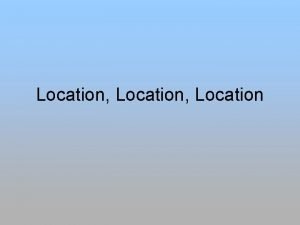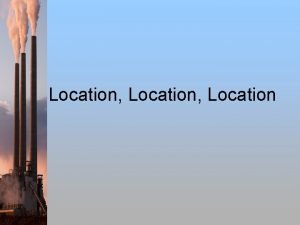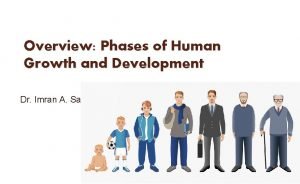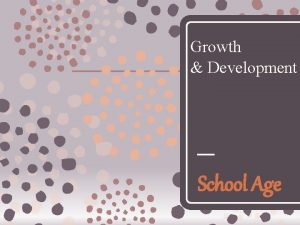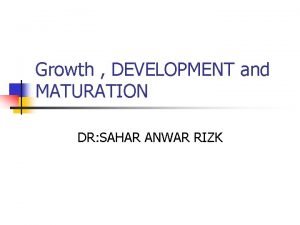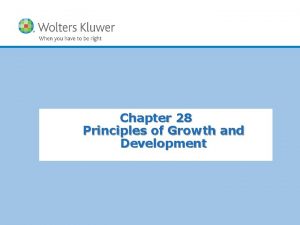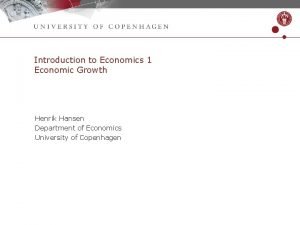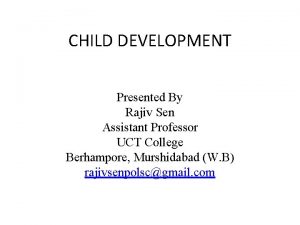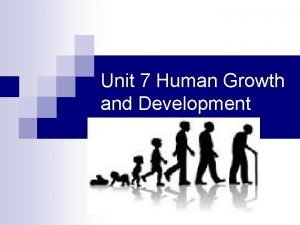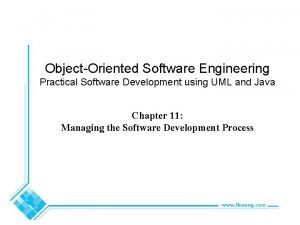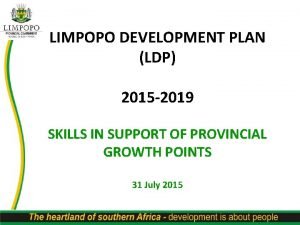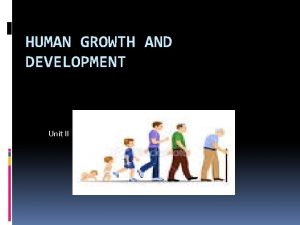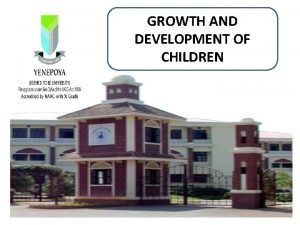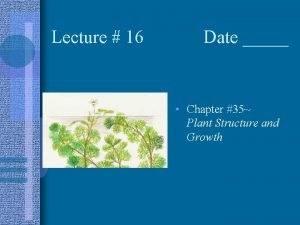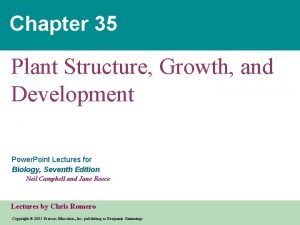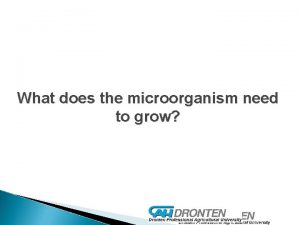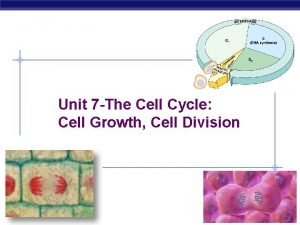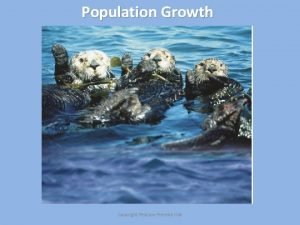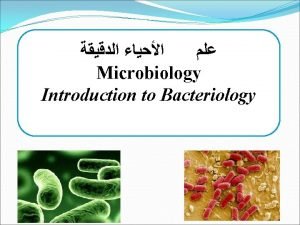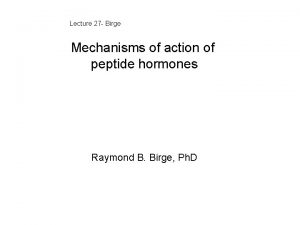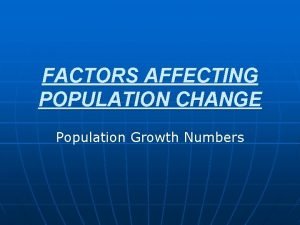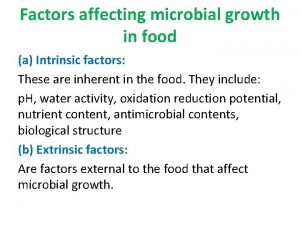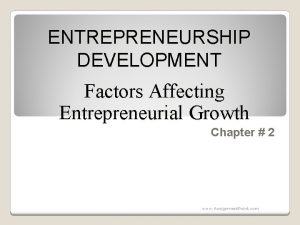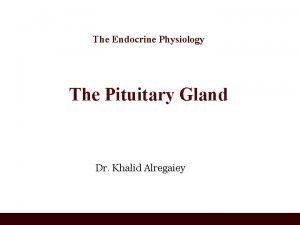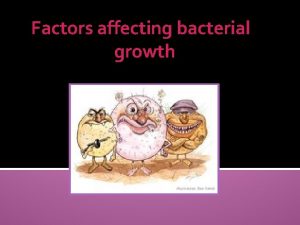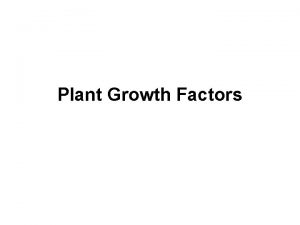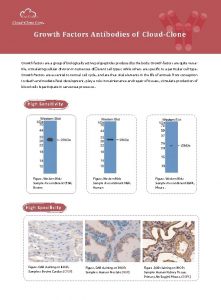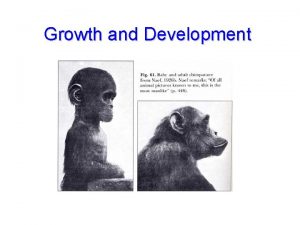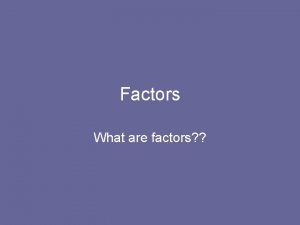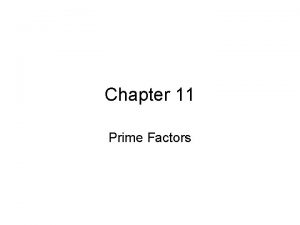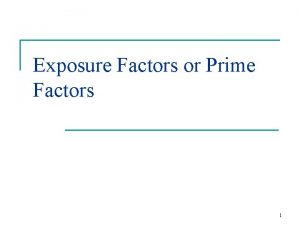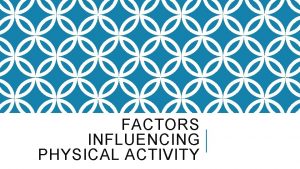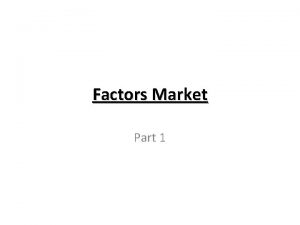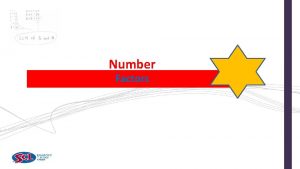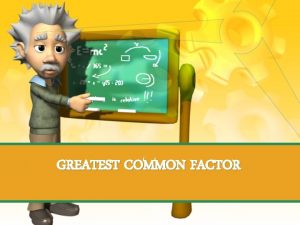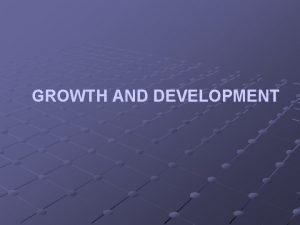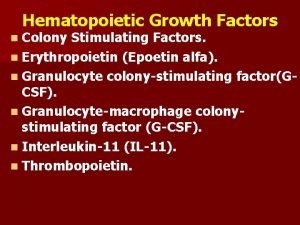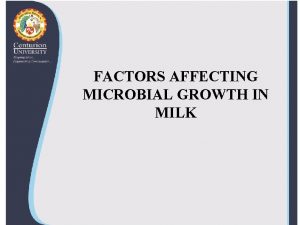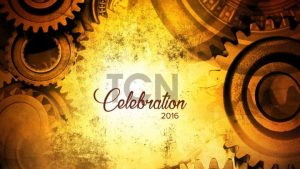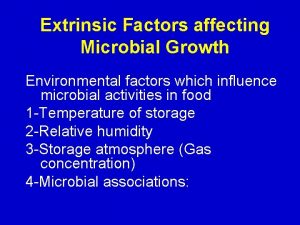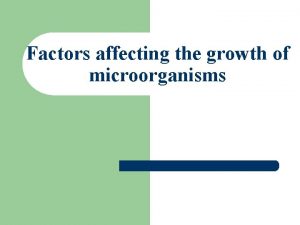Growth and Development Growth Definition of growth Factors




















































- Slides: 52

Growth and Development

Growth Definition of growth Factors affecting growth Patterns (types) of growth Parameters of growth Assessment of (normal & abnormal) Growth How to use growth charts

Development Definition of development General characteristics of development Factors affecting development Milestones of development Assessment of development Warning signs of poor development

Growth Increase of the size of the body and its organs. It’s measured in cm & kg. Development Maturation of baby systems and organs. Gaining of different skills and abilities.

Growth Factors Affecting Growth 1. Genetic / hereditary e. g. Down syndrome and Turner syndrome 2. Hormones A. Linear & skeletal growth: GH & Thyroid hormone. B. Adolescent growth: ♂ Androgen (testes ) ♀ Oestrogen (ovaries)

Factors Affecting Growth 3. Nutrition • Under nutrition (malnutrition) (marasmus & kwashiorkor). 4 - Socioeconomic • Poverty and poor living standards negatively affect growth. • Ignorance of the mother about proper feeding

Factors Affecting Growth 5. Psychological Affects endocrine homeostasis. 6 - Chronic Disease • Kidney : CRF • Heart: CHD • Chest: Asthma • Liver : LCF

Patterns ( types )of Growth 1. General (whole baby) – Rapid – Slow – Rapid Infancy, early childhood Mid childhood Adolescence 2. Genital – Slow – Rapid Infancy & childhood Adolescence – Rapid – Slow Infancy & childhood Adult 3. Neural 4. Lymphoid – Rapid – Accelerated Infancy Childhood

POST NATAL GROWTH PATTERNS

Parameters of Growth 1 -Head circumference The tape is applied firmly over the frontal prominences anteriorly and posteriorly over the part that gives maximal diameter At birth--- 34 cm At 6 months --- 42 cm At 1 year ---- 45 cm At 3 years ---- 48 cm • At 6 years ---- 50 cm • Anterior fontanels : 18 months • Posterior fontanels : at birth


2 - weight Average birth weight ---- 3 -3. 5 kg Monthly weight gain during infancy • First 4 months --- ¾ kg/month • Second 4 months ---- ½ kg/month • Third 4 months ----- ¼ kg/month After one year --- the following formula calculates the weight • Weight in kg =age in years x 2 + 8


3 - Length Average birth length --- 50 cm First 6 months --- 2 -3 cm/month Second 6 months ---- 1. 5 cm /month Average length at one year --- 75 cm After age of 2 years the following formula calculates the height Height in cm = age in years x 5 + 80



4 - Mid Arm Circumference (MAC) No much change has been noted from age 15 y. In this age MAC is as follow: Ø>13. 5 cm normal Ø 12. 5 – 13. 5 cm mild-moderate malnutrition Ø< 12. 5 cm severe malnutrition


5 - Body mass index (BMI) • BMI = weight in kg height in (m) 2 BMI > 85 percentile = overweight BMI >95 percentile = obesity BMI < 5 percentile = wasting or under weight

6 - Body proportions • Arm span is normally 3 cm less than height during the first 7 years of age the arm span should approximate the height (>8 yrs) • Lower segment (LS) Measure from the symphysis pubis to the floor. • Upper segment (US) Subtract the LS from the height

• US/LS ratio is calculated by dividing the US by the LS. About 1. 7 at birth and decreases to 1, 3 at about age 3 and decrease to 1 after 7 years of age • 20% of short patients expecteted to have pathological short sature and 80% have normal variant

7 - Dental assessment Milk teeth • Erupts from 6 months to 2 years • Order • Lower central incisors • Upper lateral incisors • Lower lateral incisors • Canines and molars

Permanent teeth • Erupts from 6 years to 13 years • Dentition delayed in • Hypothyroidism • Malnutrition • Rickets • Other chronic illnesses

Assessment of growth Recording and follow up of various growth parameter (wt, length, HC, MAC) over a period of time permit early detection of any deviation from normal growth pattern. How Through GROWTH CHARTS, we can compare the growth parameters of a given baby with the growth parameters of a normal baby of same age.

25

percentile growth chart 3 rd percentile 10 th percentile 25 th percentile 50 th (Average) 75 th percentile 90 th percentile 97 th percentile 26



8 - Pubertal Staging Tanner staging • Tanner stage 1 - 5 • Girls • Breast tissue • Pubic hair distribution • Boys • Genitalia • Pubic hair distribution

Development Maturation of body systems and organs with gaining of various skills and abilities Mental Emotional Social Motor

General characteristics of development • Continuous process from conception to maturity. • Takes place in a Cephalocaudal direction. • Proceeds from massive to specific. • Related to maturity of nervous system. • Varies from child to child.


Factors affecting development 1 - Genetic 2 - Environmental 3 - Diseases 4 - Hormones

Milestones of development 1 - Gross Motor • head support, sitting, standing. 2 - Fine Motor • the use of hands & fingers and coordination of eye. 3 - Language • cooing, laughing, speaking. 4 - Social • smiling, expressing displeasure, parent recognition.











Assessment of development 1. Ask mother about age of starting milestones especially the recent one. 2. Interact with the child and observe him. 3. Screening tests: A- Gesell Figures B- Good enough Draw- a Person Test




Warning signs of poor development SIMPLY: The developmental age is less than the chronologic age. EXAMPLE His/her age is 9 m and till now not yet set.

Warning signs of poor development • One week: poor feeding, abnormal posture, hypotonia, absent Moro reflex, convulsions. • 6 weeks: no face regard • 3 months: not smiling responsively, clenched hands. • 4 months: poor head control, content to lie, no interest in own hands. • 6 months: persistent Moro reflex, head lag on pull up, persistent hand play little interest in toys

• 9 -10 months: not sitting alone, not reaching or transferring • 11 -12 months: not mobile, no pincer grip, chokes on biscuit, poor attention span. • 12 -15 months: not crawling or pulling up, not responding to speech, persistent mouthing. • 18 months: not walking, no useful speech, clumsy hands, no sustained interest in toys. • 2 years: aimless over activity, little constructive play • 3 -4 years: does not know pictures of common things, does not follow clear orders e. g. put this on the table, cannot use a pencil to scribble or draw a straight line if shown. • 4 -5 years: cannot tell his full name • 6 years: cannot know colors: yellow, green, red and blue.

THANK YOU
 Difference between growth and development
Difference between growth and development Biotic and abiotic drawing
Biotic and abiotic drawing Abiotic vs biotic factors
Abiotic vs biotic factors Abiotic vs biotic factors
Abiotic vs biotic factors Find the common factor of 12 and 24
Find the common factor of 12 and 24 Highest common factor
Highest common factor Factors of 56
Factors of 56 Growth and decay factors
Growth and decay factors Site vs situation
Site vs situation Biotic v abiotic
Biotic v abiotic Site factors vs situation factors
Site factors vs situation factors Growth analysis definition
Growth analysis definition Eudicot
Eudicot Primary growth and secondary growth in plants
Primary growth and secondary growth in plants Primary growth and secondary growth in plants
Primary growth and secondary growth in plants Social changes in adulthood
Social changes in adulthood Principles of human growth and development
Principles of human growth and development Human growth and development
Human growth and development Most productive life stage
Most productive life stage Pretest: growth, development, and sexuality
Pretest: growth, development, and sexuality Growth development maturation
Growth development maturation Stages in growth and development
Stages in growth and development Slidetodoc.com
Slidetodoc.com Difference between economic growth and economic development
Difference between economic growth and economic development Domain 7 ppst
Domain 7 ppst Growth and development pictures
Growth and development pictures Middle childhood growth and development
Middle childhood growth and development Distinguish between growth and development
Distinguish between growth and development Growth and development in physical education
Growth and development in physical education Rice growth phases and stages
Rice growth phases and stages Principles of growth and development
Principles of growth and development Prudent financial management
Prudent financial management Functions of ethylene
Functions of ethylene Economic growth and development
Economic growth and development Growth and development
Growth and development Site:slidetodoc.com
Site:slidetodoc.com Growth and development principles
Growth and development principles Limpopo development plan 2020
Limpopo development plan 2020 Four main types of growth and development
Four main types of growth and development Principles of growth
Principles of growth Middle childhood
Middle childhood Chapter 7 human growth and development
Chapter 7 human growth and development Chapter 35 plant structure growth and development
Chapter 35 plant structure growth and development Microtubules in plant cells
Microtubules in plant cells Factors affecting microbial growth in food
Factors affecting microbial growth in food How do you know when to divide
How do you know when to divide Population growth factors
Population growth factors Factors affecting bacteria growth
Factors affecting bacteria growth Growth factors examples
Growth factors examples Population growth factors
Population growth factors Factors affecting bacteria growth
Factors affecting bacteria growth Factors affecting entrepreneurship growth
Factors affecting entrepreneurship growth Factors affecting growth hormone
Factors affecting growth hormone








